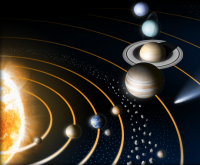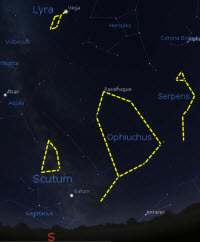 In this month's edition:
In this month's edition:
- Planetary Skylights: PM: Saturn, Moon, Mars, Neptune, Uranus. AM: Venus, Mercury, Jupiter
- Meteors: Geminids, Ursids
- Comets: Comet 46P/Wirtanen
- Winter Solstice: 21st December
- December 2018 Sky Charts
- Log in to post comments
 In this month's edition:
In this month's edition:
 In this month's edition:
In this month's edition:
 A good number of society members were at the free (but ticketed) talk held in Whitby Museum on 18th September given by Charles Cockell, Professor of Astrobiology at Edinburgh University.
A good number of society members were at the free (but ticketed) talk held in Whitby Museum on 18th September given by Charles Cockell, Professor of Astrobiology at Edinburgh University.
The Normanby room was full to capacity for Prof Cockell’s lecture on the work being carried out deep underground in Boulby mine, already well known for its work on Dark Matter and other fundamental issues in cosmology... [Read more about From Yorkshire to Mars: the search for life in the universe. (Lecture at Whitby Museum)]
 In this month's edition:
In this month's edition:
 In this month's edition:
In this month's edition:
 Continuing the tour of stellar objects crossing the meridian line in August: a star and three open clusters from constellations lying in the South, currently above Mars and Saturn:
Continuing the tour of stellar objects crossing the meridian line in August: a star and three open clusters from constellations lying in the South, currently above Mars and Saturn:
 In this month's edition:
In this month's edition:
 Continuing the tour of stellar objects crossing the meridian line this month: three objects from the constellation of Hercules:
Continuing the tour of stellar objects crossing the meridian line this month: three objects from the constellation of Hercules:
 In this month's edition:
In this month's edition:
 Continuing the tour of stellar objects crossing the meridian line this month: two globular clusters from the constellations Serpens and Scorpius.
Continuing the tour of stellar objects crossing the meridian line this month: two globular clusters from the constellations Serpens and Scorpius.